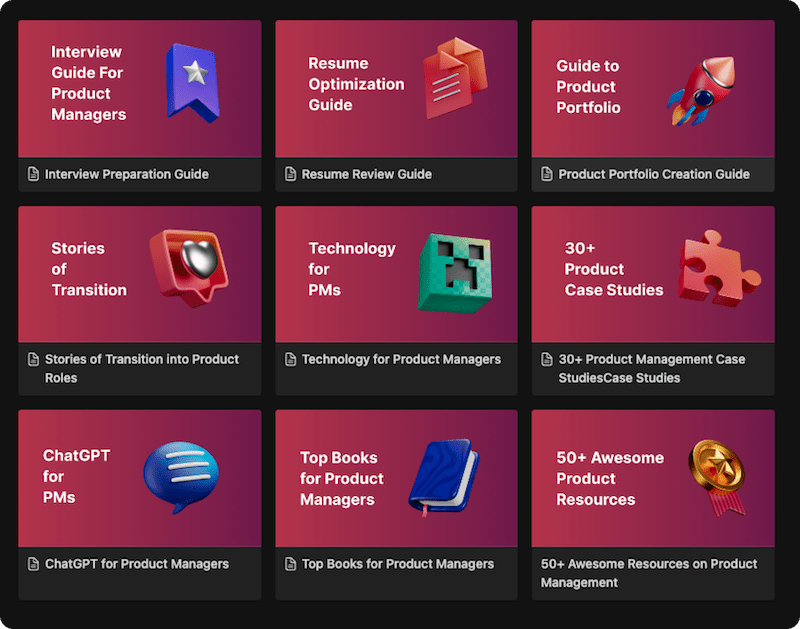Have you ever seen a beautifully crafted design prototype, full of subtle animations and pixel-perfect layouts, only to see the final developed product and think, “…that’s not quite right”? Perhaps the spacing is off, the font weight is wrong, or a critical user flow is missing an edge case. This gap between the intended design and the implemented reality is a common source of friction, delays, and frustration for product teams. It’s a problem that almost always points back to a single, critical moment in the product development lifecycle: the UX Handoff.
The UX Handoff, often called the “design handoff,” is far more than just emailing a Figma link to your engineering team. It’s a structured process, a communication strategy, and a collaborative ritual all in one. It’s the point where a product’s vision is translated into a tangible, buildable reality. A poor handoff leads to endless back-and-forth, costly rework, and a compromised user experience. A great handoff, however, empowers developers, streamlines the workflow, and ensures that the quality and intent of the design are preserved in the final product. This guide will walk you through everything you need to know to transform your UX handoff from a source of friction into a catalyst for collaboration and excellence.
The Evolution from “Handoff” to “Handshake”
Historically, the UX Handoff was often seen as a one-way street, a “waterfall” moment where designers would “throw the design over the wall” to developers. This approach is outdated and ineffective in modern agile environments.
Today, the best teams treat the handoff not as a single point in time, but as an ongoing conversation—more of a “handshake” than a handoff. This collaborative model, advocated by UX experts, emphasizes involving developers early and often in the design process. When engineers are part of the conversation from the Product Discovery phase, they can provide valuable feedback on technical feasibility, identify potential constraints, and gain a much deeper understanding of the “why” behind the design decisions. This collaborative spirit is the key to a truly seamless workflow.
Why a Great UX Handoff is Non-Negotiable
Investing in a structured handoff process isn’t just about making designers and developers happier (though it does that, too). It has a direct impact on the business and the product.
- Reduces Rework and Saves Time: When developers have clear instructions, they build the right thing the first time. This drastically cuts down on the costly and demoralizing cycle of design QA, bug reports, and rework.
- Ensures a Consistent User Experience: A detailed handoff maintains the integrity of the design system, ensuring that everything from button styles to error messages is consistent across the product, which is vital for a positive Customer Experience.
- Increases Development Velocity: With all questions answered upfront, developers can focus on what they do best: writing clean, efficient code. This leads to a faster development cycle and a quicker time to market.
- Improves Team Collaboration: A clear, respectful handoff process breaks down silos and fosters a sense of shared ownership between design and engineering. It builds a “one team” culture.
- Empowers Scalability: Well-documented designs become a single source of truth that can be used for onboarding new team members and as a reference for future projects, making the entire product organization more efficient.
The Ultimate UX Handoff Checklist: A Step-by-Step Guide
A successful handoff requires preparation and a clear set of deliverables. Here is a comprehensive guide to what your handoff package should include.
Phase 1: Preparation (Before the Handoff Meeting)
This is where the magic happens. A great handoff is 90% preparation.
1. Finalize and Organize Your Design Files
Your design file (e.g., in Figma, Sketch, or Adobe XD) is the centerpiece. It should be immaculate.
- Clean Up Your Layers: Name your layers logically and group them into components and sections. A developer shouldn’t have to decipher “Rectangle 241 copy 3”.
- Use a Clear Page Structure: Organize your file with clear pages for different user flows, components, and prototypes.
- Create a Master Style Guide: Include all approved colors, typography styles, icons, and spacing rules. This should be the single source of truth.
2. Document All User Flows and Scenarios
Don’t just hand over static screens. Show how they connect.
- User Flow Diagrams: Create visual diagrams (using tools like Miro or FigJam) that map out the complete User Journey Mapping for each task.
- Cover All States: Design for more than just the “happy path.” What does an empty state look like? A loading state? An error state? A success state?
- Edge Cases: What happens if a user enters their name with special characters? What if they lose internet connection mid-flow? Thinking through these details saves developers immense time.
3. Detail All Interactions and Animations
Static mockups don’t show how things move.
- Create Interactive Prototypes: Build clickable prototypes to demonstrate the intended flow and feel of the product.
- Document Microinteractions: Specify the details of animations, transitions, and hover states. Is it a fade-in? A slide-out? What’s the duration and easing? GIF or video recordings are perfect for this.
4. Prepare All Necessary Assets
Make it easy for developers to grab what they need.
- Exportable Assets: Ensure all icons, illustrations, and images are marked as exportable in your design tool, preferably in multiple resolutions and formats (like SVG for icons).
- Provide Copy: Don’t use “Lorem Ipsum.” Provide the final or near-final copy for all elements.
Phase 2: The Handoff Meeting
This is a formal meeting (or series of meetings) involving the Product Designer, the Product Owner/PM, and the engineering team who will be building the feature.
- Walk Through the User Journey: Start with the “why.” Explain the user problem you’re solving and the goals of the project. Then, walk through the interactive prototype, telling the story from the user’s perspective.
- Review Key Screens and Components: Go over the most complex or novel parts of the design. Point out specific interactions and states.
- Open the Floor for Questions: This is critical. Encourage developers to ask questions and challenge assumptions. This is their chance to poke holes in the design and identify potential technical hurdles before a single line of code is written.
Phase 3: Post-Handoff Support
The handoff isn’t over when the meeting ends.
- Be Available: Make it clear that you are available for follow-up questions. A dedicated Slack channel for the feature can be very effective.
- Conduct Design QA: Before the feature is released, the designer should review the implemented product in a staging environment to catch any discrepancies between the design and the final build. This is a crucial part of the UX Handoff loop.
Modern Tools for a Smoother UX Handoff
Modern design tools have revolutionized the handoff process by automating much of the tedious work of “redlining” (manually annotating specs).
- Figma, Sketch, and Adobe XD: These are the industry standards. Their “Inspect” or “Dev Mode” features are game-changers, allowing developers to click on any element and instantly get the CSS properties, dimensions, colors, and assets.
- Zeplin: A dedicated handoff tool that acts as a bridge between design and development. Designers can export their frames from Figma or Sketch, and Zeplin automatically generates a living style guide and specs for developers.
- Storybook: An open-source tool for building UI components in isolation. It’s fantastic for teams with a mature design system, as it allows developers and designers to work with a library of real, coded components.
Mistakes to Avoid: The Handoff Killers
- The “Over the Wall” Handoff: Not involving developers until the design is “final” is the number one mistake. It leads to unfeasible designs and an adversarial relationship.
- Incomplete or “Happy Path Only” Designs: Forgetting error states, empty states, and edge cases creates a huge amount of guesswork for developers.
- Sloppy Design Files: Unnamed layers and disorganized files are a sign of disrespect for the developer’s time and can cause significant confusion.
- Assuming, Not Communicating: Never assume a developer will “just know” how an interaction should work. If it’s not documented or prototyped, it will likely be built incorrectly.
- No Post-Handoff Support: A designer who disappears after the handoff meeting is a major bottleneck. The handoff is a process, not a single event.
Conclusion
The UX Handoff is a pivotal moment that can define the success or failure of your product development process. Viewing it not as a bureaucratic checkpoint but as a crucial opportunity for collaboration is the first and most important step. When design and development work in partnership, with a shared understanding of the user’s needs and the product’s goals, the handoff becomes a natural, seamless transfer of knowledge. It transforms from a potential bottleneck into a powerful alignment tool that ensures the product you build is the product you envisioned.
By implementing a structured process, leveraging modern tools, and, most importantly, fostering a culture of early and continuous communication, you can eliminate the friction that plagues so many teams. A successful UX Handoff doesn’t just result in a better-built product; it builds a stronger, more efficient, and more collaborative team. It ensures that the passion and insight from the design phase are not lost in translation but are carried all the way through to the hands of your users.
FAQ’s
While the Product Designer is typically responsible for preparing the handoff documents and leading the process, the Product Manager is ultimately responsible for ensuring the handoff is successful. The PM acts as the facilitator, ensuring that communication is clear and that both design and development are aligned on the goals and scope.
In a true agile spirit, the “handoff” is continuous. Developers should be involved during the design sprints. However, a more formal handoff meeting typically occurs during Backlog Grooming
or just before Sprint Planning, where the finalized designs for the upcoming sprint’s User Stories are presented and discussed.
A UX Handoff (or design handoff) is from the design team to the development team. An [Engineering Handoff] is typically a transfer of code and operational responsibility from the development team to a DevOps or Site Reliability Engineering (SRE) team, focusing on deployment, monitoring, and maintenance.
Start by co-creating a handoff checklist with both your designers and developers. Ask the developers: “What information is most helpful for you? What is consistently missing?” This collaborative approach, followed by a Product Retrospective to review how it went, is the best way to improve.
Learn better with active recall quiz
How well do you know UX Handoff: The Complete Guide for Product Managers and Designers Let’s find out with this quick quiz! (just 10 questions)


